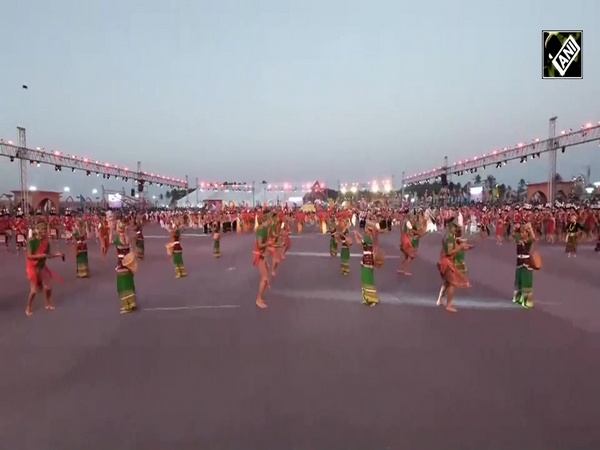Yearender 2020: Celebration of festivals affected adversely amid COVID-19
Dec 30, 2020

New Delhi [India], December 30 : As coronavirus continues to wreak havoc across the world, people around the globe restricted their enthusiasm to celebrate festivals this year.
In an effort to clamp down on the infectious disease, the government took major steps to revamp certain safety guidelines for common people such as social distancing, strict restrictions on wearing masks, proper sanitisation and a nationwide lockdown.
The first festival after the deadly infection hit the country was the festival of colours 'Holi'. The festival was observed on March 10 this year. During that time, the spread of the virus was at its initial phase in the country.
People themselves took major precautions in terms of selecting the materials used for Holi celebrations which led to less amount of sales in markets. On the other hand, there was also less information about the spread and cause of the virus.
Even as the country noticed a sudden increase in the number of cases of the virus. To prevent its further spread, the government ordered a 21-day nationwide lockdown on March 24, 2020. It was ordered after a 14-hour voluntary public curfew on March 22.
The next major festival was 'Ramadan' that was observed in the month of May this year. At that time, the nation was witnessing the fourth phase of lockdown which was further extended by the National Disaster Management Authority, till May 31.
To keep the traditions alive, the devotees globally found online alternatives to celebrate the festival. Virtual sermons, social media celebrations and online concerts were the major events witnessed this year.
As the nationwide lockdown was lifted and the government started 'Unlocking' at various zones, the next major festival that was observed in the month of August was 'Raksha Bandhan'. It was noted by the experts that after the lockdown was raised, the country experienced a hike in the rate of the virus spread.
Hence, celebrations of the occasion that celebrates the brother-sister bond remained muted this year. People preferred to stay at home and made homemade sweets to avoid hopping in the markets. Few people also celebrated the festival with the front-line warriors, including medical staffs and police officers to extend their gratefulness for their services.
Krishna Janmashtami, the festival that witnesses a mass number of devotees visiting temples to offer their prayers was observed on August 12 this year. This festival took a virtual route this year. The religious organisation- International Society for Krishna Consciousness (ISKON) temples live-streamed the celebrations.
Thereafter, Ganesh Chaturthi which was celebrated on August 22 this year. In Maharashtra, where the highest cases of the virus were detected, the state government restricted the height of idols and limited visits to pandals.
In the month of October, when the country witnessed a decline in the number of COVID-19 cases count. The Indian Council of Medical Research pointed out that any negligence in the coming festival like the 'Durga Pooja' could lead to re-spread of the infection.
People strictly followed the protocols of social distancing politicised by the government. People attended online darshans of the pandals and received blessings of the goddess. Many places also installed open pandals, for people to drive by and receive sight of the idols.
In the month of November, a muted 'Diwali' was celebrated this year. With restrictions on mass gatherings, a ban on selling and bursting of firecrackers was imposed.
Few temples observed heavy rush though the people were seen observing social distancing. Sanitisation process took place regularly for devotees at temples.
On November 30 'Gurupurab' the major day celebrated to mark the birth of the first Sikh Guru 'Guru Nanak Dev' was observed. By this time, India reported a low number of active cases and the rise in the recovery rate. However, being cautious social distancing, wearing of masks and sanitisation was strictly abided by the management of religious places.
The last major festival of the year 2020, Christmas, was also a much-curtailed affair. Although there was a decline in the number of active cases, for self-safety, those who used to visit the midnight mass at church preferred to do the same at home.




















